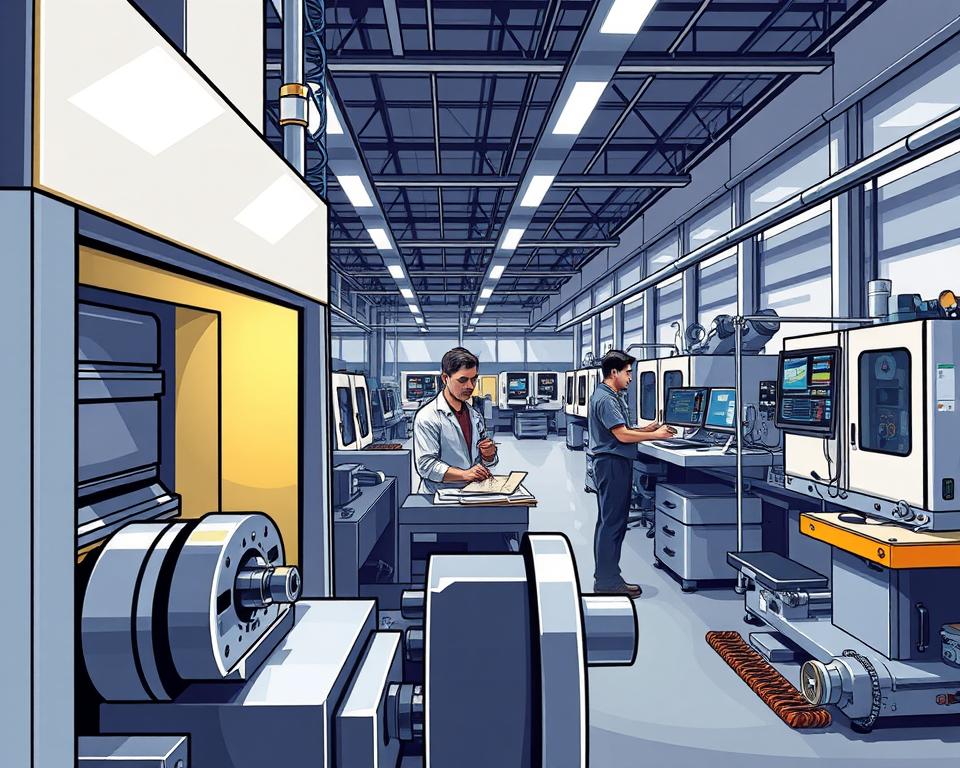Experience Hapabox Mystery Box Excitement – Try It Today!
Picture getting a present that delights you and ignites wonder. With Hapabox mystery box, that scenario comes alive, bringing fun directly to you. More than a gift—it’s an exploration waiting inside each box. For you or someone dear, every box hides a trove of treasures.
Seamless e-commerce lets you dive into a universe of selected goodies. Opening your box becomes a participatory expedition, not just a gift reveal. It makes shopping feel like a fun game. Why hold off? Begin your virtual mystery box quest immediately!
Welcome to Hapabox’s Thrilling Universe
Step into Hapabox’s lively realm, with every hapabox surprise box delivering joy to inquisitive buyers. This groundbreaking site converts regular gifting into a journey brimming with thrills. You can sift through multiple categories to uncover distinctive gifts suiting any passion.
From cutting-edge tech gadgets to trendy fashion items, Hapabox caters to a wide range of preferences. Every box houses a set of handpicked items, ideal for those wanting unforgettable gifts. A vast array means there’s always the perfect pick for loved ones or yourself.
Understanding Hapabox Mystery Box
A Hapabox mystery box is an exciting way to explore a variety of products, uniquely curated and ready to surprise you. Box contents follow distinct themes geared to various hobbies. It introduces you to a splendid collection you may have overlooked. This element of surprise is what sets Hapabox apart from the crowd of mystery box websites.
Each order kicks off a thrill-packed voyage of surprises. Curiosity peaks during delivery wait, dreaming of hidden delights. Every unique box refreshes routine shopping, breaking the monotony.
The reveal moment stokes the thrill. Clients enjoy discovering special picks, from must-have gadgets to novelty trinkets. For surprise seekers, every Hapabox reveal is a blissful experience.

Your Hapabox Unboxing Tutorial
Each unbox session evolves into a heart-pounding escapade. The thrill begins once the box is in your hands. It feels like playing a reveal game as goodies emerge.
To begin your hapabox unboxing, gather friends or family for more fun. This group dynamic adds to the excitement, making each reveal a shared moment of discovery. As you open the box, the anticipation grows with every item, like a series of surprises waiting to be unveiled.
Gamified steps add a playful twist to each reveal. Dynamic animations and play-along steps deepen immersion. Every discovery boosts the thrill for all participants.
Relish each unexpected find. Active participation enhances the thrill. Enjoy the quest, creating joyful memories with every reveal.
Explore Hapabox’s Diverse Boxes
With myriad boxes, Hapabox meets all tastes and events. Shoppers can delve into themed boxes, ranging from tech gadgets to fashion items and hobbies. So each shopper uncovers a box tailored to their liking. This range turns gift selection into a creative endeavor.
Customers can opt for subscription services, receiving a new surprise box regularly. Regular boxes fuel continuous excitement. Each box is designed to include unique gifts that are both entertaining and practical. Making each unbox session a moment to rejoice.
| Category |
Description |
Examples of Themed Boxes |
| Tech Gadgets |
Latest gadgets to improve everyday life. |
Smart Home Devices, Portable Chargers |
| Fashion Items |
Trendy apparel and accessories. |
Streetwear Collection, Jewelry Boxes |
| Hobbies |
Engaging items that support personal interests. |
Gaming Essentials, Craft Supplies |
The Joy of Unpredictability in Mystery Box Open Games
The thrill of a mystery box open game is rooted in its unpredictability. Each unboxing experience offers the chance to discover unique and valuable items hidden within a surprise box. Unwrapping layer by layer heightens anticipation. Adventure converts a plain buy into a showstopper event.
Many repeat players attest to the fun these games deliver. Each Pokemon mystery box holds its own surprises, perfect for presents or self-treats. This unpredictability builds a thriving unbox community sharing joy.
Unique Gift-Giving with Hapabox
A Hapabox mystery box is a top pick for those looking for unique gifts. Each package features handpicked goods tuned to personal preferences. Customization transforms ordinary presents into cherished treats. It shows you care, picked just for them.
Perfect for birthdays, holidays, or just to make someone’s day, a Hapabox mystery box is versatile. Universal themes mean everyone finds something to love. This method turns gift-giving into a creative, caring act.
With Hapabox, you gift connection and delight. They’ll appreciate the effort put into selecting such unique items, making the gift-giving moment unforgettable. More than a gift, it’s a heartfelt expression of care.
Discover Hapabox Themes
Hapabox’s theme-based boxes match any passion or fad. Themes guide the selection for maximum impact. Collectors love the “Pokemon TCG mystery box,” packed with cards and accessories. Meanwhile, the “streetwear mystery box” focuses on the latest fashion trends, appealing to those who love urban style.
These themed boxes not only provide unique items but also create a sense of community among those with similar passions. Selecting a surprise box immerses you in what you love. It elevates the reveal into a full-blown exploration.
| Themed Box Type |
Description |
Target Audience |
| Pokemon TCG Mystery Box |
A curated selection of trading cards, accessories, and collectibles. |
Card game enthusiasts and collectors. |
| Streetwear Mystery Box |
Fashion items including clothing and accessories from renowned streetwear brands. |
Fashion-forward individuals interested in urban culture. |
| Gamer Box |
Includes merchandise and gear from trending video games. |
Gaming community and fans. |
| Kids Mystery Box |
Fun toys, books, and games tailored for children. |
Parents and gift-givers. |
Personalized Surprises: How Hapabox Delivers Tailored Experiences
Hapabox excels in crafting personalized surprises that cater to each customer’s unique tastes. Boxes brim with items echoing personal hobbies. This detailed curation means each box fits perfectly.
Customers can tailor their experience by choosing from various themes and categories. They might opt for boxes centered around hobbies, favorite colors, or specific interests. That makes each delivery precisely right, improving customized gifts standards. Turning every reveal into a standout experience.
| Box Type |
Description |
Example Items |
| Hobby Box |
Customized gifts themed around specific hobbies. |
Craft supplies, knitting kits |
| Wellness Box |
Focus on relaxation and self-care. |
Essential oils, bath bombs |
| Gamer Box |
For gaming enthusiasts with classic and new items. |
Game collectibles, themed wearables |
Integrating personalized surprises into Apple mystery box brings joy and strengthens bonds.
Shipping and Delivery: Fast and Reliable Services
Hapabox prioritizes speedy delivery and dependable service. Typical delivery spans 3–7 business days, heightening suspense. Real-time tracking enhances the journey by updating status.
In today’s fast world, quick shipping is crucial. Shoppers value precise arrival estimates. Their proven delivery track record sets them apart.
| Shipping Option |
Estimated Delivery Time |
Tracking Availability |
| Standard Shipping |
3–7 Business Days |
Yes |
| Expedited Shipping |
1–3 Business Days |
Yes |
Hapabox vs. The Rest
True authenticity and high quality matter in mystery boxes. Though many sellers abound, few rival Hapabox’s excellence. Verified partners supply real products, distinguishing Hapabox.
Opting for Hapabox yields key advantages:
| Feature |
Hapabox Mystery Box |
Other Mystery Box Websites |
| Product Authenticity |
Guarantee from verified partners |
Quality can vary significantly |
| Variety of Boxes |
Diverse themes and options |
Limited selection |
| Customer Trust |
Highly rated by users |
Mixed reviews depending on the site |
| Customer Support |
Responsive and helpful |
Often lacking |
Buyers pick Hapabox for its excellence and dedication to happiness. Opt for a mystery box website that values these aspects for a better unboxing experience and more delightful surprises.
Customer Opinions
Customer reviews for Hapabox mystery boxes are overwhelmingly positive. They showcase the excitement and anticipation that comes with every unboxing.
Customers delight in finding exclusive items they’d never buy ordinarily. Comments praise both quality and affordability. Shoppers repeatedly note the joy of surprise discoveries. Surprise-driven returns cement Hapabox’s standing.
| Rating |
Comments |
Highlights |
| 5 Stars |
Love the surprises! Never know what I will get! |
Exciting new items each time |
| 4 Stars |
Great quality, but I wish there were more themes. |
Well-made products |
| 4.5 Stars |
Fantastic value for the price! Highly recommend. |
Unique finds that impress |
Customer stories vividly illustrate the excitement Hapabox delivers. If you crave the exceptional, testimonials make a strong case for Hapabox.
Hapabox Deals & Promo Codes
Special promotions enhance your Hapabox journey. Fresh customers grab promos to launch their adventure. Discounts come as coupon codes plus referral bonuses for new boxes.
Snagging promos saves cash and keeps the fun rolling. Each reveal remains a fresh journey with varied themes. This ongoing excitement to try new boxes adds to the thrill of each reveal.
Join the Community: Share Your Unboxing Journey
Joining the Hapabox tribe amplifies your thrill. By sharing on social media, you invite others to join in the excitement of each mystery box.
Posting photos or videos of your latest finds sparks a lively atmosphere of sharing and discovery. The right tags unite you with the reveal community. Together you honor the variety of unbox magic. Find fresh themes and fellowship alike.
The spirited group makes every reveal special. Each unboxing becomes a shared talking point. Swap tales to see diverse Hapabox thrills, ensuring every unbox is distinct.
Find Your Perfect Mystery Box
The right choice enhances fun and fulfillment. Assess your likes and dislikes to guide your pick. Consider what themes or types of products excite you. Are electronics, skincare, or oddball décor your picks? Clarity on preferences leads to the perfect unbox.
Filtering adjusts the selection to your tastes. Leverage filters to zero in on ideal boxes. Recall prior boxes to choose with confidence. Enthusiast groups provide tips and guidance.
Whether you’re looking for joy through surprises or a unique gift, these tips will guide you. They promise an enjoyable unboxing adventure.
Connecting with Fellow Mystery Box Enthusiasts
The vibrant unbox scene fosters connection and exchange. Forums and socials let collectors trade advice and celebrate reveals.
Sharing unboxing adventures is a big part of the fun. Discuss prized reveals and favorite boxes. Community energy amps up passion and fun.
To Conclude
The Hapabox mystery box offers a captivating shopping journey, filled with the thrill of the unknown. Each box is thoughtfully put together, making unboxing a memorable experience. Great for spoiling yourself or surprising a loved one. Variety and uniqueness elevate it above standard shopping.
Hapabox goes beyond just selling products; it brings joy, community, and engagement. Customers can broadcast their reveals, amplifying the fun. Group engagement fortifies ties among enthusiasts fueled by excitement.
Choosing a Hapabox mystery box is a choice for an extraordinary online shopping experience. To add excitement to presents or personal indulgences, pick Hapabox. Happiness resides inside each box ready for you.
FAQ
What is a Hapabox mystery box?
It contains a handpicked assortment of mysterious gifts. They are delivered to your doorstep, focusing on specific themes or interests. Enjoy a unique collection that steps outside your standard choices.
How does the unboxing experience work?
The unboxing experience is both interactive and gamified. You relish discovering surprises one at a time. Dynamic visuals enhance the experience.
What types of mystery boxes does Hapabox offer?
A diverse selection of box types awaits. Options span electronics, apparel, and niche themes.
How does Hapabox ensure quality and authenticity of items?
All products are sourced from trusted partners. You get authentic goods, never fakes. It cements customer faith and repeat business.
Can I choose a theme for my Hapabox mystery box?
Yes! Customers can pick themes or categories when they buy. This makes each box unique and tailored to their personal tastes.
How fast is the shipping for Hapabox mystery boxes?
They deliver rapidly with consistent reliability. Many mystery boxes arrive within 3–7 business days.
Are there any discounts available for new users?
Yes—first-time buyers get unique discount codes. Includes promo codes plus referral perks.
How can I share my unboxing experience with others?
Share your reveals on socials to spread the fun. Include images, clips, and tags to connect. That sparks group interaction and inspiration.
What should I consider when choosing a Hapabox mystery box?
Think about what excites you and prior experiences. Use filters to zero in on the ideal box.
How can I connect with other mystery box enthusiasts?
Engage on socials or forums for shared unbox fun. Share treasures and advice with fellow fans.










